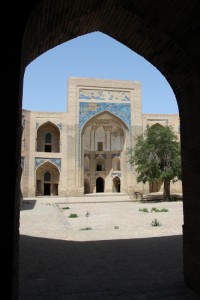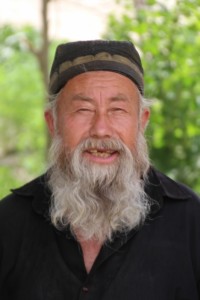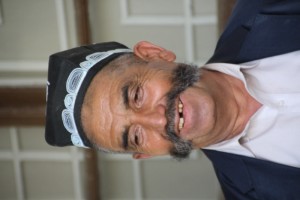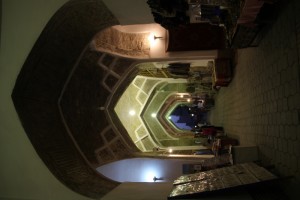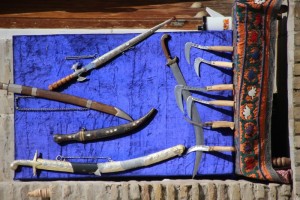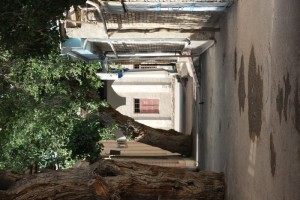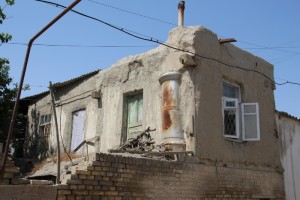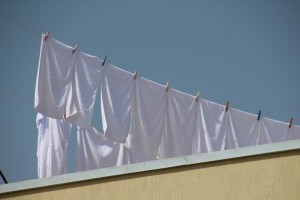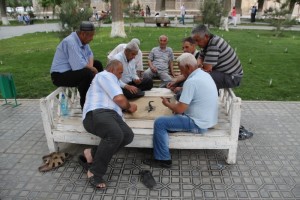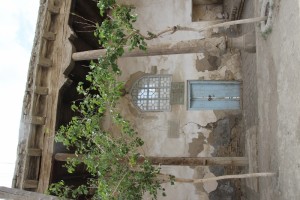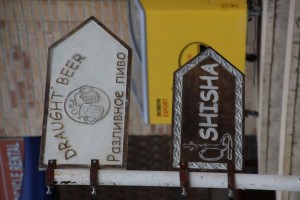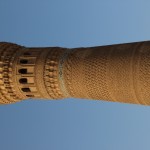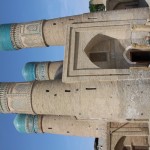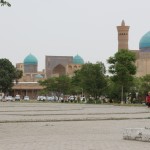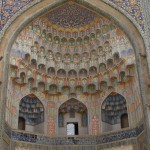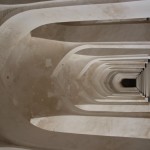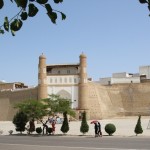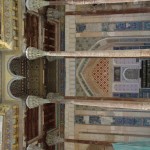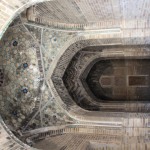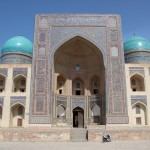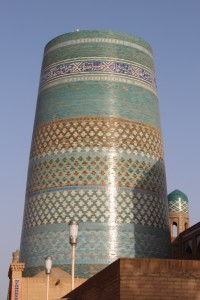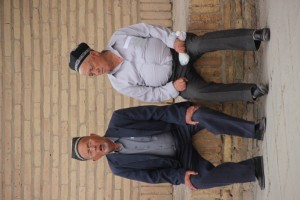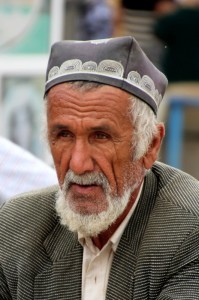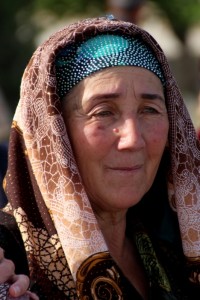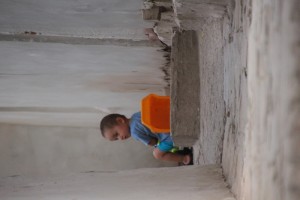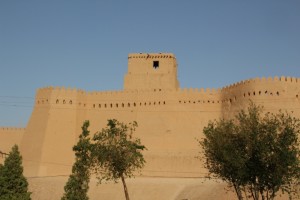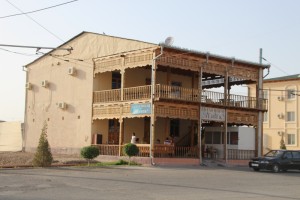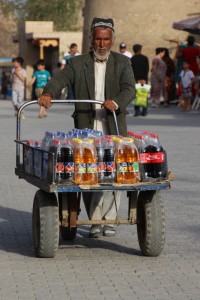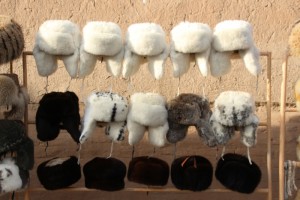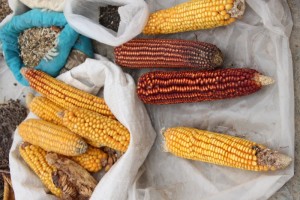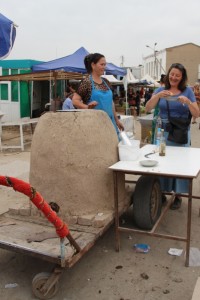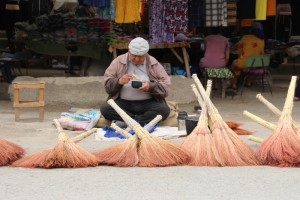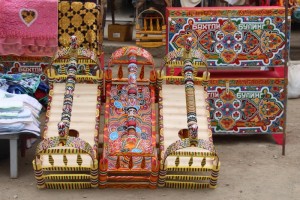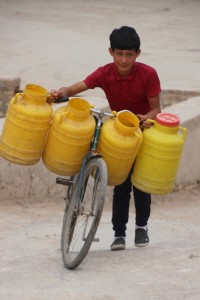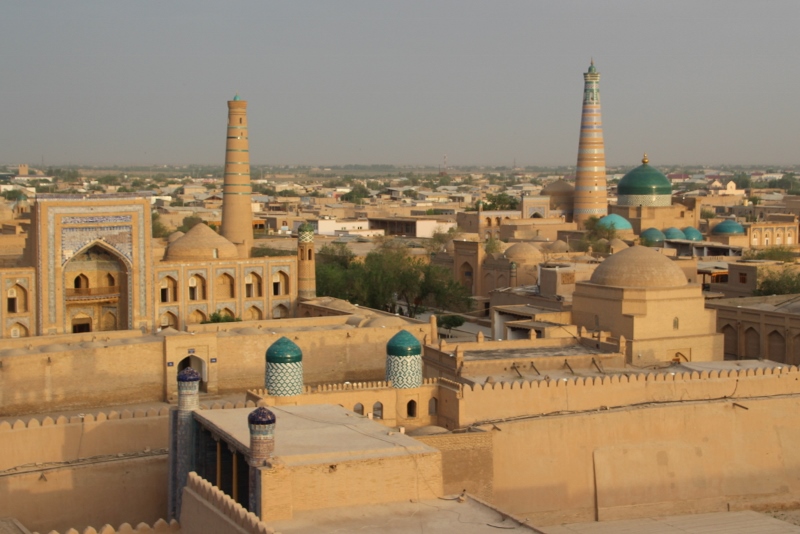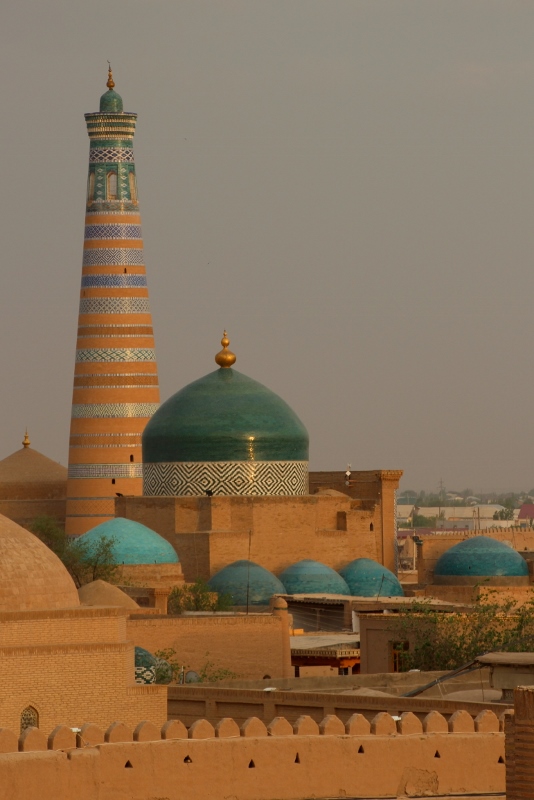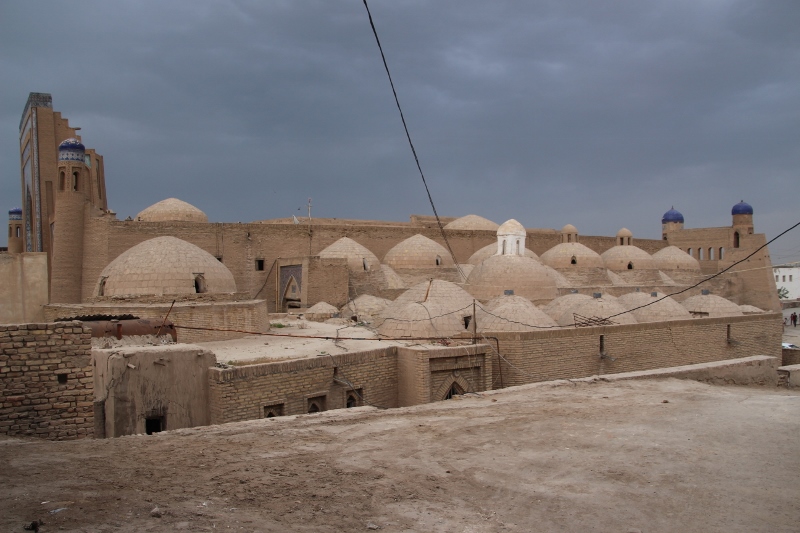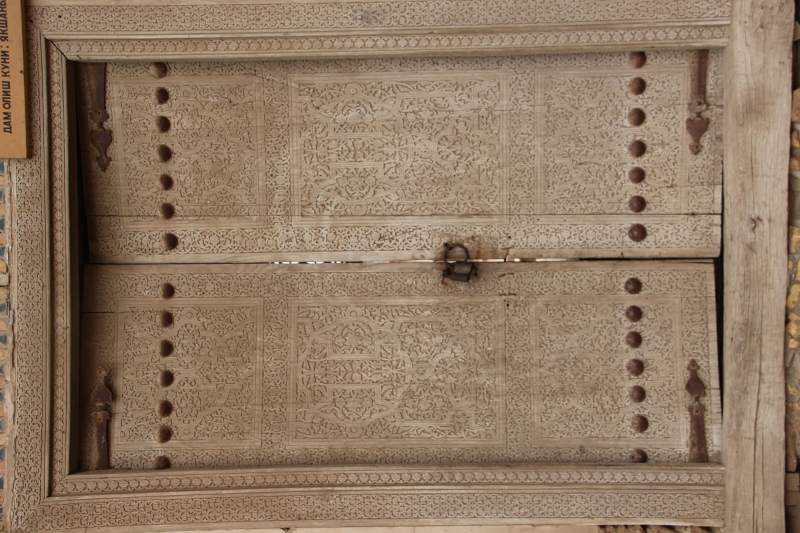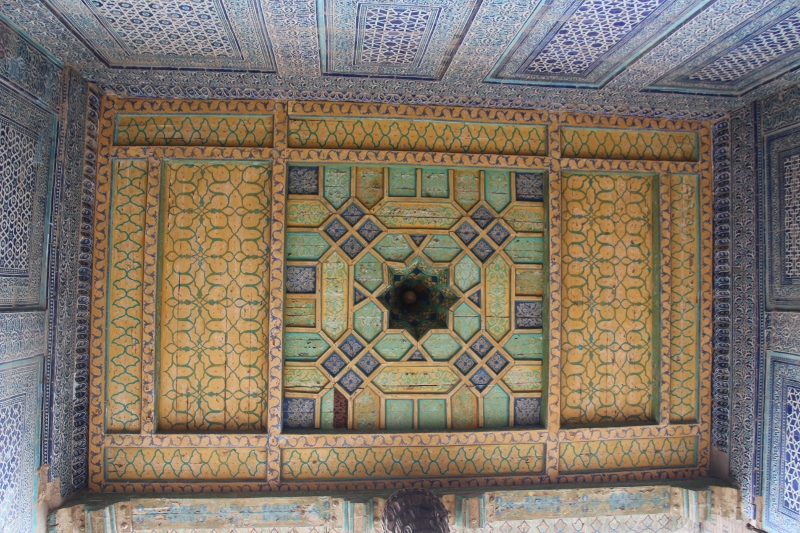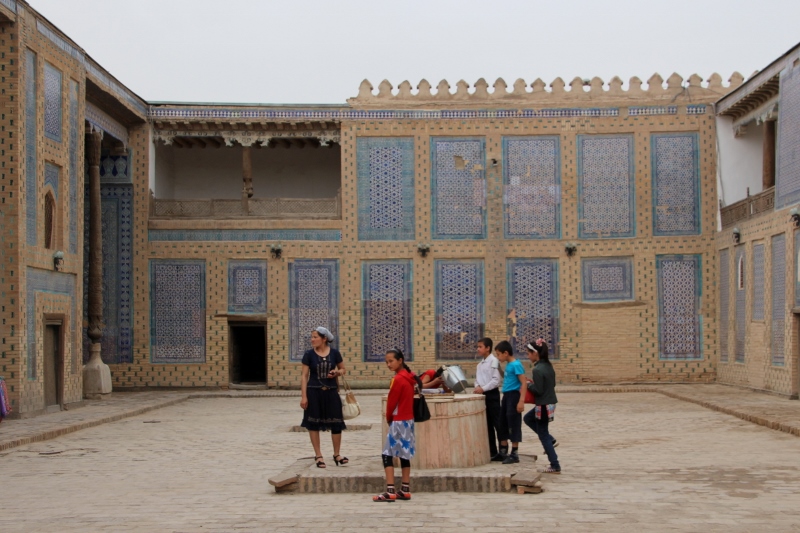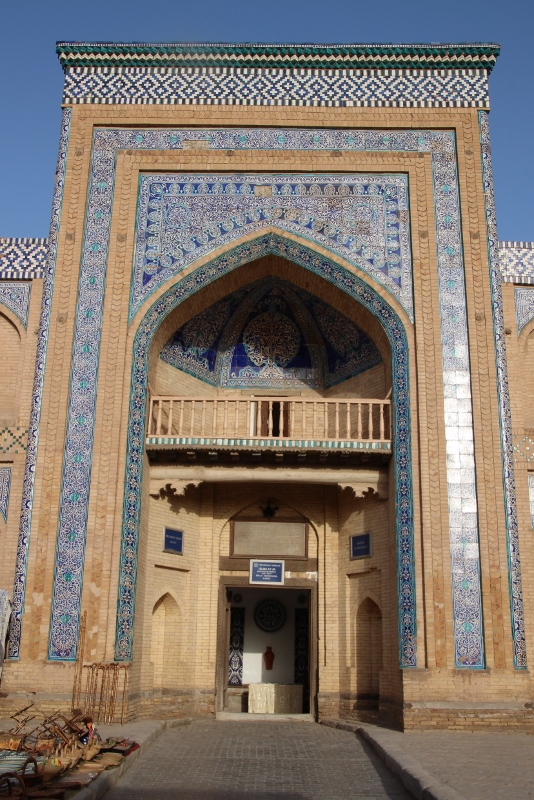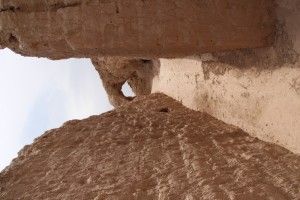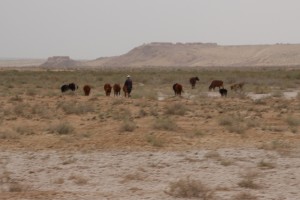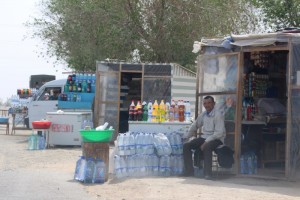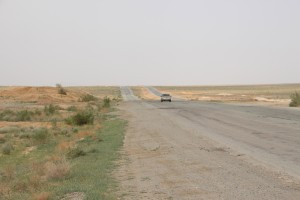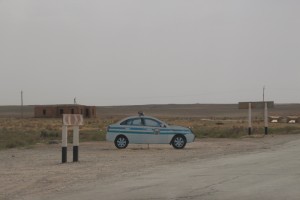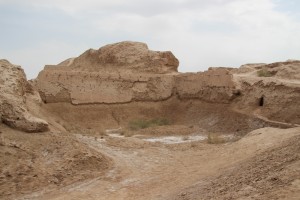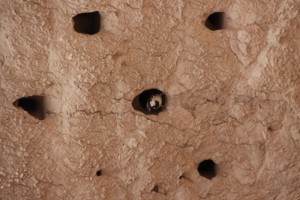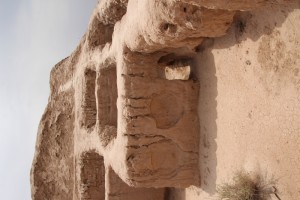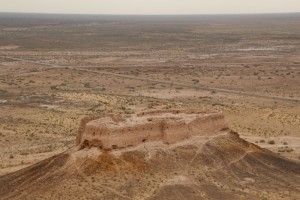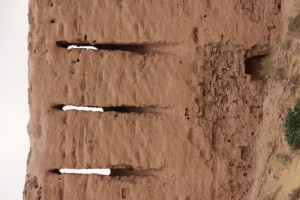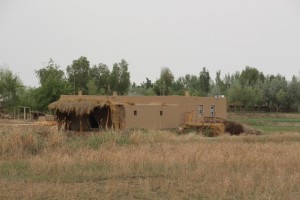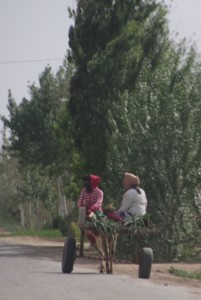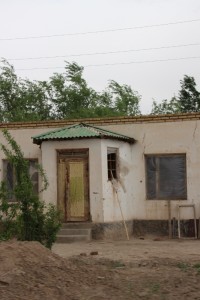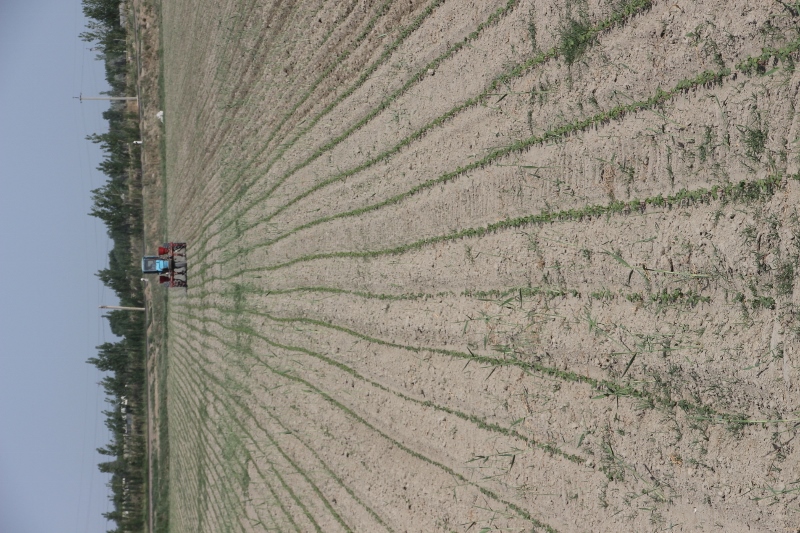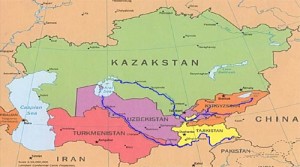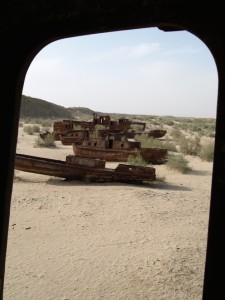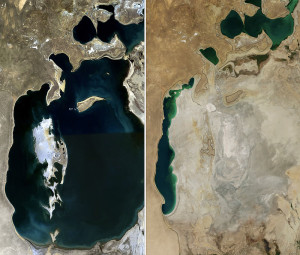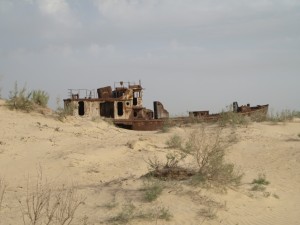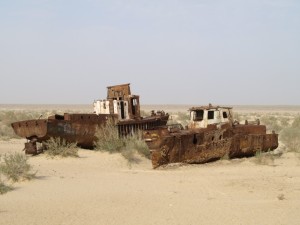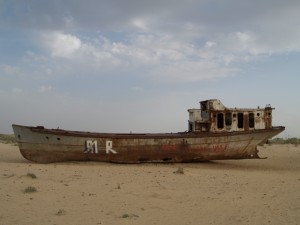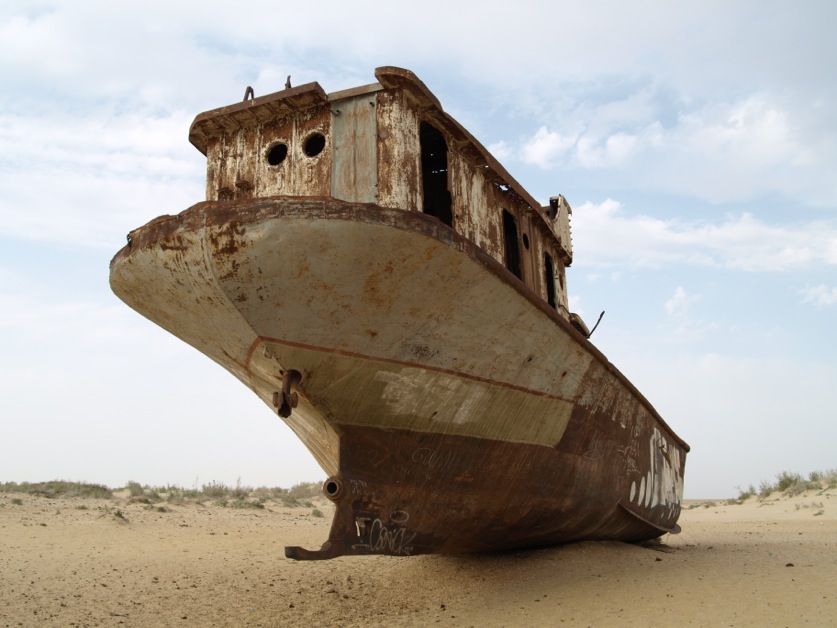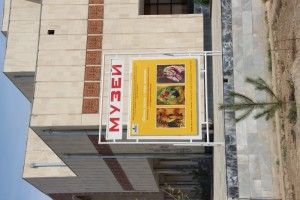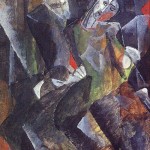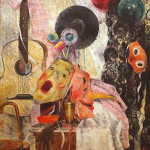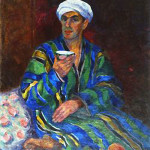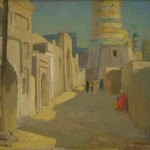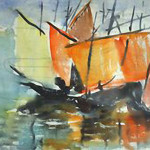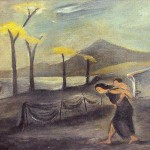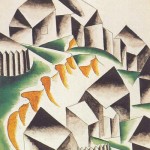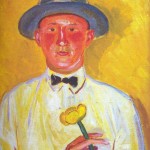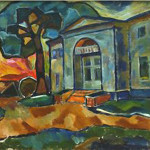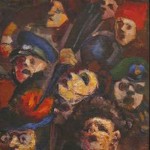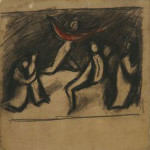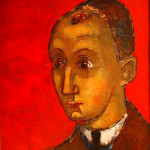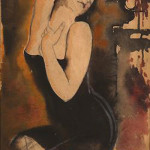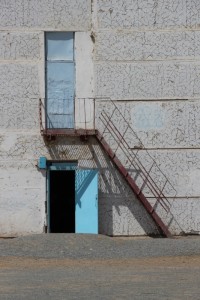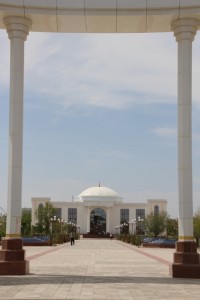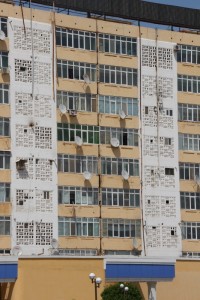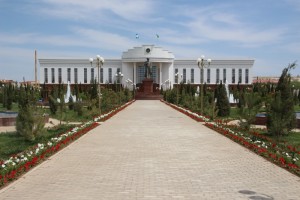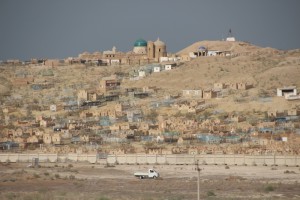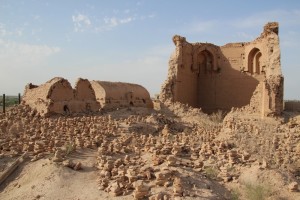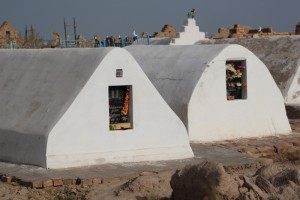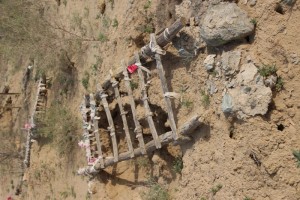Once Central Asia’s holiest place, laid-back Bukhara is a delight to wander around, through the backstreets or past the monuments, and has some unexpected surprises, too

the restaurant, only excitement along the road between Khiva and Bukhara; clay oven in the front, toilets in the back
There are several means of traveling from Khiva to Bukhara. There are trains, leaving from Urgenj, a bigger town half-an-hour’s drive away. Or busses, also leaving from Urgenj, and taking nine hours. Or one can take a shared taxi, which is what we opted for. Comfortable, and with six hours only a lot quicker than train or bus. Given the now-familiar desert-like countryside, the shorter travel the better.
Bukhara, like Khiva, was another of the relatively small Middle Age khanates that had established themselves in this part of Central Asia, and were forever at loggerheads with their neighbours. But Bukhara, unlike Khiva, was also an important city much earlier. The town held out relatively long against the Muslim expansion in the 7th Century, but like so many others finally succumbed. In the 9th and 10th Century the town was the flourishing capital of the Samanid dynasty and developed into the dominant cultural center of Central Asia. And then came Ghengis Khan, in 1220, and razed the town to the ground, after have raped the women and murdered the men. Marco Polo, who travelled at the end of the 13th Century, never came here, and Ibn Batutu, that other ancient traveller, only saw ruins when he visited Bukhara in 1366. Ghengis had done a thorough job. So clearly, the notion of looking at Silk Road-Bukhara is nonsense, it doesn’t exist anymore.
But around 1500 the city rebounded again, under a new, Uzbek dynasty, who established order in the prevailing anarchy, benefitted from increasing trade with Russia, and initiated a construction program of which much is still visible. An important part of the program was the building of madrassas – religious schools – and mosques, and Bukhara grew to once again become the holiest place in Central Asia. And one of the pawns in the Great Game, which developed between Russia and Britain in the 19th Century. Ultimately, Bukhara came under Russian influence, but not before a number of colourful spies had passed through, some of them, like the British military envoys Stoddard and Connolly, never to leave again – they were beheaded in public, creating an outrage back in Britain not unlike the present-day Western reactions to IS beheadings of Westerners. The emir, Nasrullah, apparently complained to his court jesters, “Why, I can kill 1000’s of Persians and nobody complains, and than this reaction if I kill only two Brits”. Also similarities to present-day reactions to IS, perhaps?
In any case, Russian influence grew, yet Bukhara managed to stay nominally independent, something that was brutally corrected by Soviet forces in 1920. They didn’t care much for religious buildings, and it was not until fairly recently that the madrasses and the mosques were restored again, to turn Bukhara into the second-best tourist attraction of Uzbekistan. Many of the buildings have lost their original purpose and are now hotels, carpet weaving workshops, or shopping centres Bukhara-style, with the courtyard filled with boutiques, souvenir shops, restaurants and tea houses (the local Starbuck equivalent).
Well, the reality is, of course, that some of the more important buildings have been restored, and very nicely, thank you, but many of the smaller madrassas and mosques, and also many of the old caravanserais – the large court yards were trading travellers could overnight, with their ware and their animals -, many of those are still crumbling away. Which make Bukhara such an interesting town to explore: around every corner in the old city hides another gem, often locked up, but occasionally left open to peek through the gate. One particularly nice, unrestored mosque is operating as a tea house, on days other than Friday. And for the better, I think, because it will be business that generates the cash necessary to ultimately save these fabulous buildings.
We spent a good two days in Bukhara, which gave us the opportunity to see the main monuments from different sides at different times of the day, in different light – and they do look different, every time. We were pestered by the many souvenir and carpet and copper and whatever-else-they-sell-sellers, which did temper my initial Khiva-derived enthusiasm about the maturity of the tourist industry in this country. We had draft beer on a terrace along the most famous pond in town, the Lyabi-Hauz. We had some great food in local home-cooking restaurants. We got pretty sick, too, perhaps also from one of those restaurants. And we found – listen to this! – an Uzbekistan wine tasting place, where we could try no less than eight different Uzbek wines. Inside one of those restored caravanserais.
As with Khiva, I have collected some of the images of monuments in a gallery. Best to click on the gallery, and then watch the full size photos.
